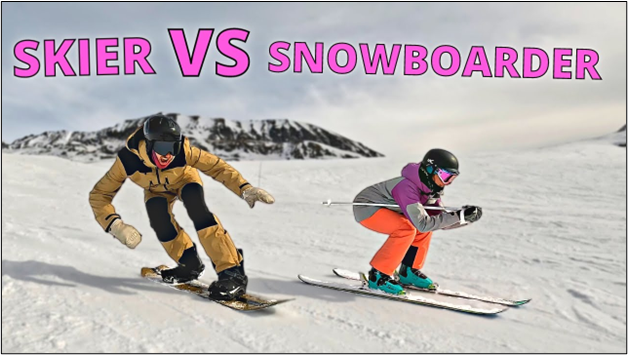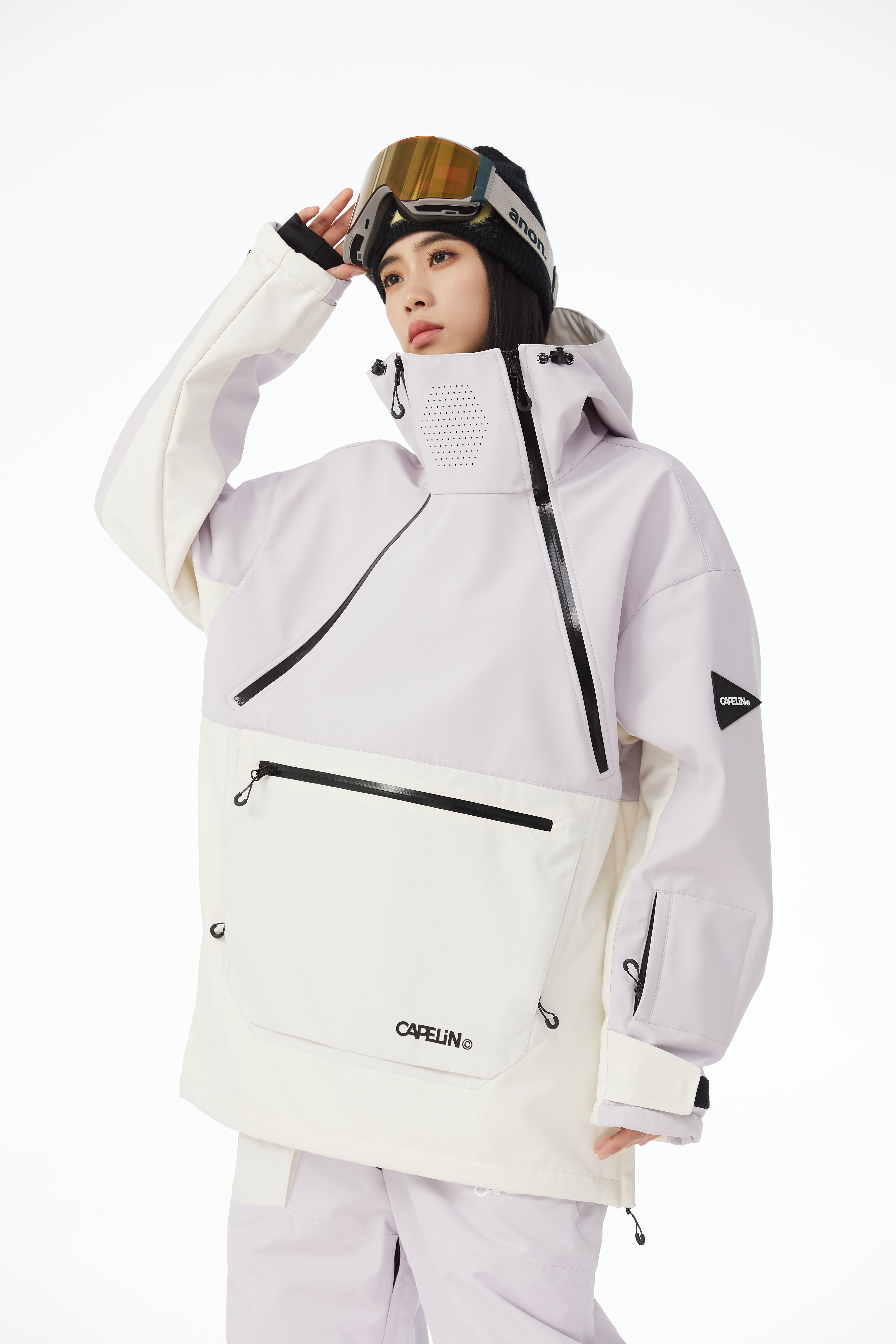Skiing and snowboarding are two of the most exhilarating winter sports, each offering a unique blend of speed, agility, and communion with nature. These activities provide an escape into the crisp, alpine air and serve as a platform for personal challenge and growth.
The consensus among winter sports enthusiasts is that skiing is generally easier to learn but harder to master, while snowboarding is harder to learn but easier to master.
As millions flock to the slopes each year, a friendly debate persists among enthusiasts: is snowboarding harder than skiing? Let’s find out below!

Learning Curve
Initial Learning Phase
Skiing and snowboarding are both thrilling winter sports that captivate beginners with their unique challenges and rewards.
Initially, most people find that skiing is more intuitive due to the ability to move each leg independently. Usually, it makes the first few days on the slopes feel more manageable. Balance and coordination play a crucial role from the outset; skiing allows beginners to distribute their weight across two separate skis. Honestly, it can be less daunting than the singular board used in snowboarding.
Progression to Proficiency
As you progress, the nuances of each sport become more apparent. Skiing, often perceived as easier to pick up, demands a high level of technical skill to truly master. In contrast, snowboarding may present a steeper initial learning curve, with the fundamental challenge being confidently using the heel and toe edges for control. However, once these basics are grasped, snowboarders can often progress to a proficient level more quickly, especially if they are bold and willing to push their limits.
The journey from beginner to intermediate and advanced levels is marked by personal achievement and exhilaration. For skiers, the transition involves refining techniques such as carving and tackling varied terrain, while snowboarders work on perfecting their turns and mastering different snow conditions.
Moreover, the concept of easier" to learn, harder to master" for skiing and the opposite for snowboarding encapsulates the experiences of many enthusiasts, highlighting the rewarding nature of both sports as skills develop.
Physical Demands
Muscular and Cardiovascular Requirements
Skiing and snowboarding both require a significant amount of muscular strength and cardiovascular endurance, but they target different muscle groups and energy systems.
Skiing predominantly demands leg strength and endurance, as the sport involves a continuous engagement of the quadriceps, hamstrings, and glutes to navigate the slopes. The repetitive nature of skiing, characterized by a series of powerful moves over time, necessitates what is known as power endurance.
Snowboarding, on the other hand, places a greater emphasis on core strength. A strong core stabilizes the body, improves balance on the mountain, and supports overall posture, which is crucial for effective snowboarding.
Exercises like squats, twisting squats, and planks are particularly beneficial for snowboarders as they enhance the rotational aspect of the sport and build the necessary core strength.
Flexibility and Balance
Flexibility is essential in both skiing and snowboarding for executing movements through different ranges of motion. Regular stretching is recommended to maintain optimal conditioning and flexibility of the muscles, particularly in the trunk, hips, and ankles.
Balance is also a critical skill for skiers and snowboarders, as it affects both the learning curve and performance. Training that focuses on balance can help improve overall performance on the slopes.
Injury Risk
Common Injuries
Skiing and snowboarding come with their own sets of common injuries, reflecting the different demands and mechanics of each sport. Skiers often suffer from lower extremity injuries due to the fixed nature of ski boots and the lateral forces encountered during falls.
Snowboarders, conversely, are more prone to upper extremity injuries, such as wrist fractures, as they are more likely to fall on their hands when losing balance.
Fatalities and Serious Injuries
While both sports carry risks, the nature and frequency of serious injuries and fatalities differ. The use of safety equipment, such as helmets and wrist guards, along with adherence to safety precautions, can significantly reduce the risk of severe injuries in both skiing and snowboarding.
It is important for participants to be aware of these risks and to take the necessary steps to protect themselves while enjoying these winter sports.
Psychological Aspects
The Fear Factor
The fear factor is a significant psychological aspect that beginners face when learning to ski or snowboard. The prospect of descending a slope at high speeds can be daunting, and the fear of falling or getting injured can be a barrier to learning.
However, with proper instruction and gradual progression, this fear can be managed and even transformed into a thrilling sense of adventure.
Satisfaction and Rewards
The satisfaction and rewards of mastering skiing or snowboarding are immense. The sense of achievement when one successfully navigates a challenging slope, performs a new trick, or simply improves their technique can be deeply fulfilling. This sense of accomplishment, coupled with the physical exhilaration of the sports, contributes to their enduring popularity.
Environmental and Social Factors
Influence of Terrain, Snow Conditions, and Weather
The terrain, snow conditions, and weather significantly influence the learning and performance of skiing and snowboarding. Different terrains and snow conditions present unique challenges and require different skills.
Weather conditions, such as visibility and temperature, can also affect performance and safety. Understanding and adapting to these environmental factors is a crucial part of mastering these sports.
Social Aspects
The social aspects of skiing and snowboarding communities can greatly support learning. These communities often foster a spirit of camaraderie, encouragement, and shared passion, which can motivate beginners and provide a supportive environment for learning.
Group lessons and clubs can also offer opportunities for shared experiences and learning from others.
Conclusion
Both skiing and snowboarding present unique challenges and rewards. The learning curve, physical demands, and injury risks differ between the two sports, but both offer immense satisfaction and a sense of achievement.
The choice between skiing and snowboarding ultimately depends on personal preferences, physical fitness, and willingness to accept risk. Regardless of the choice, both sports offer an exhilarating way to enjoy winter and the great outdoors.
FAQ
Q: What should I wear if I'm snowboarding for the first time?
A: As a beginner, CapelinCrew recommends try 3-layer wearing system, which more information can be found in "3 layer wearing system".












